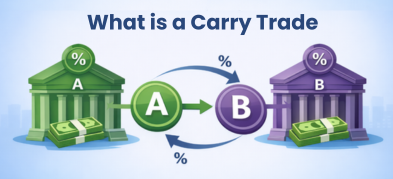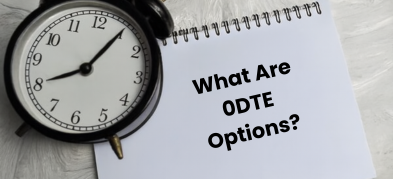
Ultima Markets App
Trade Anytime, Anywhere
Important Information
This website is managed by Ultima Markets’ international entities, and it’s important to emphasise that they are not subject to regulation by the FCA in the UK. Therefore, you must understand that you will not have the FCA’s protection when investing through this website – for example:
- You will not be guaranteed Negative Balance Protection
- You will not be protected by FCA’s leverage restrictions
- You will not have the right to settle disputes via the Financial Ombudsman Service (FOS)
- You will not be protected by Financial Services Compensation Scheme (FSCS)
- Any monies deposited will not be afforded the protection required under the FCA Client Assets Sourcebook. The level of protection for your funds will be determined by the regulations of the relevant local regulator.
Note: Ultima Markets is currently developing a dedicated website for UK clients and expects to onboard UK clients under FCA regulations in 2026.
If you would like to proceed and visit this website, you acknowledge and confirm the following:
- 1.The website is owned by Ultima Markets’ international entities and not by Ultima Markets UK Ltd, which is regulated by the FCA.
- 2.Ultima Markets Limited, or any of the Ultima Markets international entities, are neither based in the UK nor licensed by the FCA.
- 3.You are accessing the website at your own initiative and have not been solicited by Ultima Markets Limited in any way.
- 4.Investing through this website does not grant you the protections provided by the FCA.
- 5.Should you choose to invest through this website or with any of the international Ultima Markets entities, you will be subject to the rules and regulations of the relevant international regulatory authorities, not the FCA.
Ultima Markets wants to make it clear that we are duly licensed and authorised to offer the services and financial derivative products listed on our website. Individuals accessing this website and registering a trading account do so entirely of their own volition and without prior solicitation.
By confirming your decision to proceed with entering the website, you hereby affirm that this decision was solely initiated by you, and no solicitation has been made by any Ultima Markets entity.
I confirm my intention to proceed and enter this website Please direct me to the website operated by Ultima Markets , regulated by the FCA in the United KingdomRisk vs Reward: How to Balance Them?
Understanding risk vs reward is a foundational concept that every trader and investor needs to master. In its simplest form, it’s the balance between the potential loss you might incur and the potential gain you stand to achieve. The key isn’t to eliminate risk but to manage it in a way that ensures sustainable, long-term growth.

What Does Risk vs Reward Mean?
At its core, risk refers to the potential loss that comes with a trade or investment, while reward is the potential gain. The goal is not to eliminate risk entirely but to carefully assess whether the potential reward justifies the risk. By managing this balance, traders and investors can achieve consistent, long-term success.
The essential question to ask is: how much risk are you willing to take to potentially earn a reward?
The Risk vs Reward Ratio
One of the most reliable ways to evaluate whether a trade or investment is worth pursuing is by using the risk vs reward ratio. This ratio compares the potential loss to the potential gain of a trade or investment.

How to Calculate the Risk vs Reward Ratio
The Risk vs Reward Ratio is calculated by comparing the potential loss to the potential gain. Here’s the basic formula:
Risk to Reward Ratio = Potential Loss ÷ Potential Gain
For instance, if your stop-loss is set at 50 points (or pips) and your target is 150 points, your risk-to-reward ratio would be 1:3. This means you’re willing to risk 1 unit to potentially gain 3 units.
Why is the Ratio Important?
A higher risk-to-reward ratio helps you assess whether a trade is worth pursuing. Many traders aim for a minimum ratio of 2:1. Meaning for every $1 they risk, they aim to earn $2 or more. This gives room for error and ensures that even with a lower win rate, their profitable trades can still outweigh the losses.
Breakeven Win Rate
To gauge the effectiveness of a risk-to-reward ratio, it’s useful to calculate the breakeven win rate, which tells you the minimum percentage of successful trades needed to break even. For example:
- With a 1:1 ratio, you need a 50% win rate to break even.
- With a 2:1 ratio, you need only a 33.3% win rate.
- With a 3:1 ratio, you only need 25% wins to break even.
These figures demonstrate how higher risk-to-reward ratios reduce the win rate required to remain profitable.
The Role of Expectancy
While the risk vs reward ratio is critical, a concept called expectancy provides an even clearer picture of your long-term trading success.
Expectancy is the average amount you expect to win (or lose) per trade, considering both the win rate and the average win/loss size. Here’s how to calculate it:
Expectancy = (Win Rate × Average Win) − (Loss Rate × Average Loss)
For example, if you have a 60% win rate and an average win of $200, but your loss rate is 40% with an average loss of $100, your expectancy would be:
Expectancy = (0.60 × 200) − (0.40 × 100) = 120 − 40 = $80 per trade
This means you can expect to make $80 per trade over time, even though you might lose 40% of the time. Your winnings are enough to cover the losses and still leave you with a profit.
Position Sizing: Managing Risk Effectively
Another essential component of managing risk is determining the position size for each trade. This refers to how much capital you allocate to each trade, based on your acceptable level of risk.
To manage risk properly, the position size should be adjusted so that a specific percentage of your account is never at risk. For example, if your trading account has $10,000 and you are willing to risk 1% of your account per trade, you would risk $100 per trade.
Position Size = Dollar Risk ÷ Stop Loss
For example, if your stop loss is 50 points and you want to risk $100 per trade, the position size would be:
Position Size = $100 ÷ 50 points = 2 contracts
Adjusting position size based on your risk tolerance and the stop-loss distance ensures that no single trade poses a significant threat to your overall account.
The Kelly Criterion: Maximizing Long-Term Growth
For those who want a more refined approach to position sizing, the Kelly Criterion offers a formula to determine the optimal amount to risk per trade based on your estimated win rate and reward-to-risk ratio. The formula is:
Kelly = W − (1 − W) ÷ R
Where:
- W is your win probability (expressed as a decimal)
- R is the reward-to-risk ratio
For example, if your win rate is 60% (0.6) and your risk-to-reward ratio is 2:1, the formula would give you:
Kelly = 0.60 − (1 − 0.60) ÷ 2 = 0.60 − 0.40 ÷ 2 = 0.60 − 0.20 = 0.40
This means that, according to the Kelly Criterion, you should risk 40% of your capital on each trade for optimal long-term growth. Many traders, however, prefer to use half of Kelly to reduce the risk of large drawdowns.
Risk-Adjusted Returns: Sharpe Ratio
In addition to managing individual trades, it’s important to evaluate your overall portfolio’s risk-adjusted returns. One common method is the Sharpe ratio, which compares the return of an investment to its risk (volatility). The formula for the Sharpe ratio is:
Sharpe Ratio = (Portfolio Return − Risk-Free Rate) ÷ Portfolio Volatility
A higher Sharpe ratio indicates that the returns earned are worth the risk taken. This metric can be used to compare different strategies and help you decide whether you’re getting the most efficient returns for the risk you’re taking.
Common Mistakes to Avoid
Even with a solid understanding of risk vs reward, traders and investors can make some common mistakes:
- Overestimating Reward: Setting unrealistic targets without considering market conditions. Always base targets on logical technical levels and avoid wishful thinking.
- Ignoring Position Sizing: Failing to adjust your position size according to risk tolerance and the volatility of the market. Risk management isn’t just about stops. It’s about sizing trades to your comfort level.
- Letting Losses Run: Allowing losses to grow unchecked by not using stop losses or adjusting them appropriately. Use stops as a way to protect your capital, not as a suggestion.
- Focusing Only on the Ratio: A high risk-to-reward ratio is important, but it’s expectancy and consistency that will determine your long-term success.
Conclusion

Balancing risk vs reward is at the heart of every successful trader’s or investor’s strategy. Whether you’re trading single positions or managing a diversified portfolio, understanding how to calculate and adjust your risk and reward, track expectancy, and size your positions accordingly is essential for sustainable success. With a disciplined approach, you can navigate any market condition and continue growing your capital with purpose.
Disclaimer: This content is provided for informational purposes only and does not constitute, and should not be construed as, financial, investment, or other professional advice. No statement or opinion contained here in should be considered a recommendation by Ultima Markets or the author regarding any specific investment product, strategy, or transaction. Readers are advised not to rely solely on this material when making investment decisions and should seek independent advice where appropriate.












